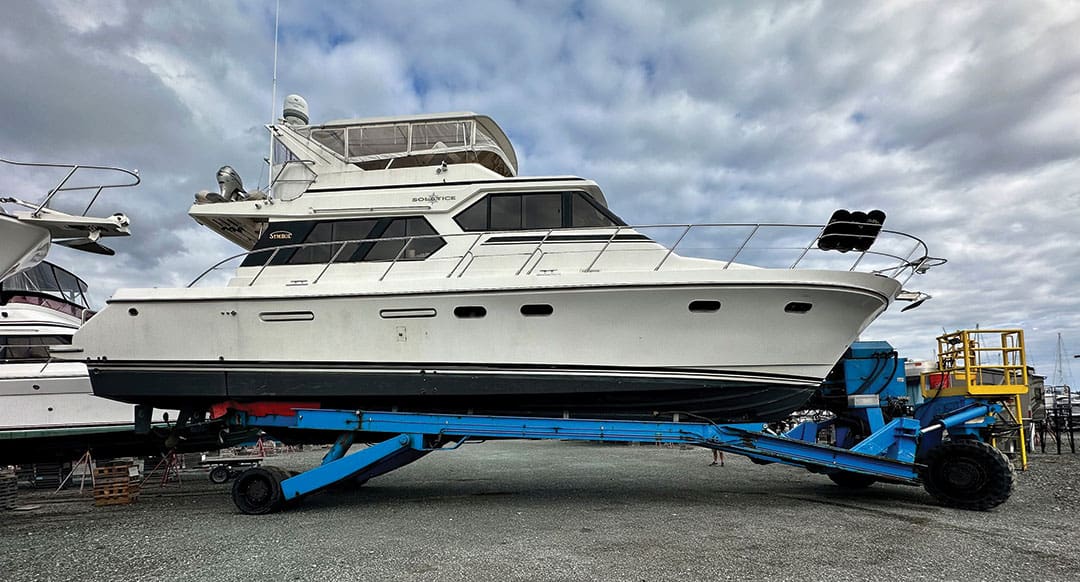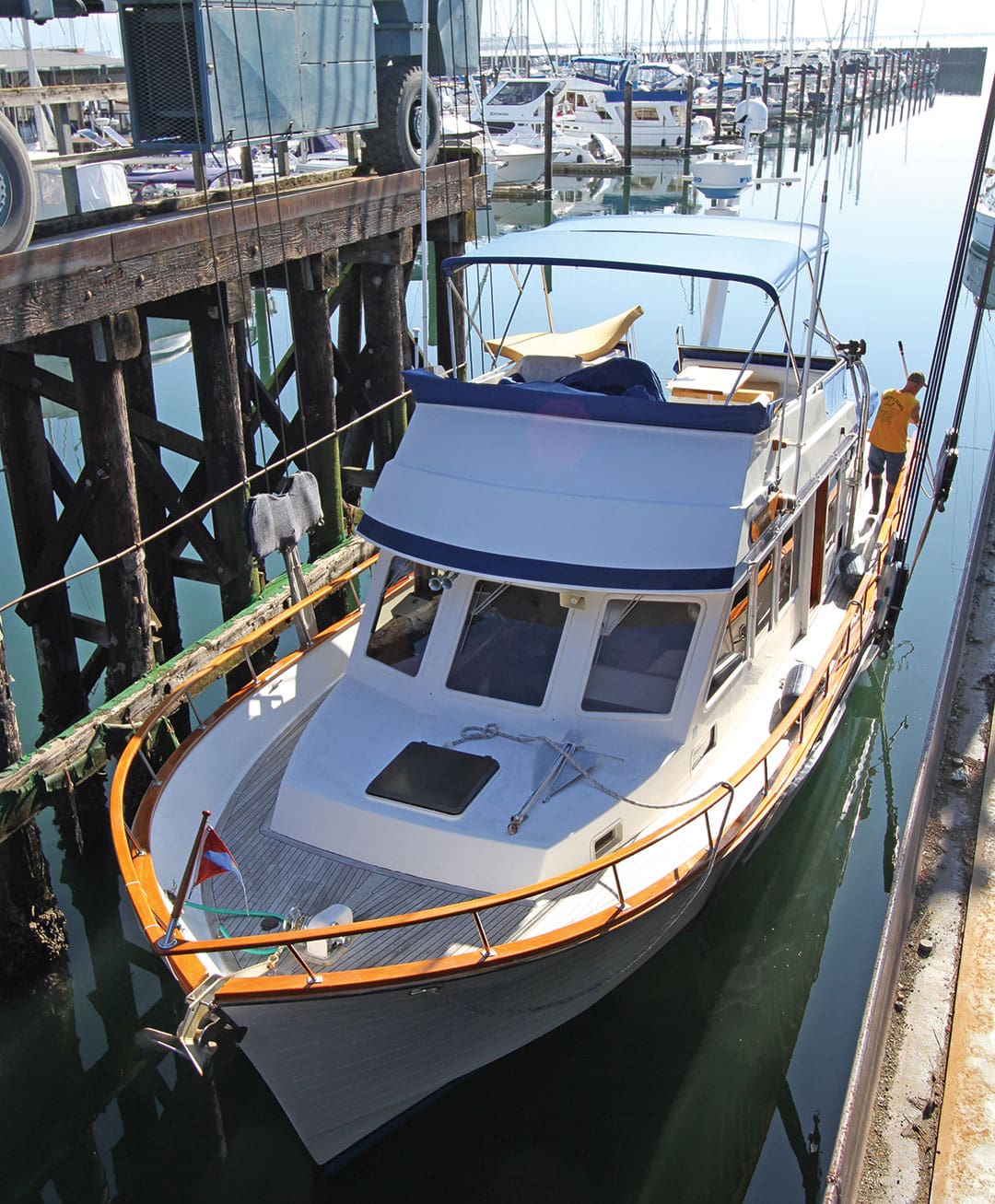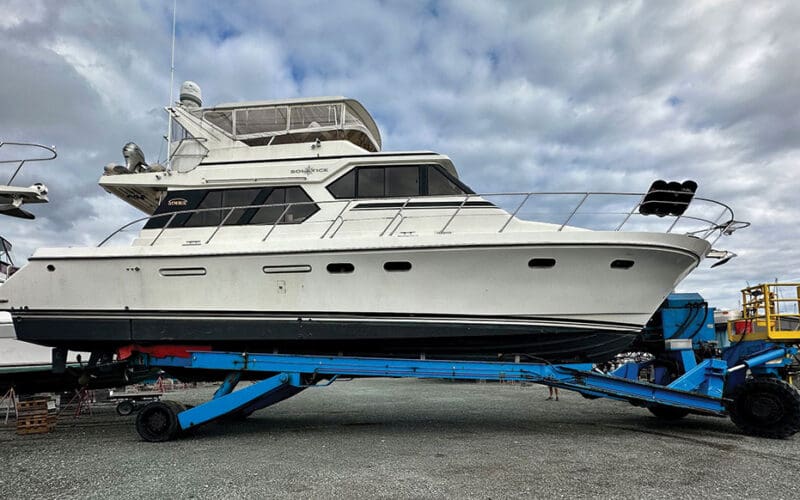
If you own a power voyaging boat, you know that one of the hardest things to do is finding somewhere to keep it. If you’ve just bought a boat, or are thinking of buying one, you also know that finding a slip is ridiculously difficult. And if/when you do, be prepared to pay at least $25 per foot per month and probably more. Much more. I was recently quoted $1,900 a month for my 57-foot boat.
I’ve been on the wait list at six different marinas for more than five years…and I’m still waiting. They all have the audacity to charge me anywhere from $50 to $200 per year just to be on their waiting list. I went to one marina and asked how long their waiting list was and the woman looked me straight in the eye and said, “You’ll be dead.”
I don’t use my boat Solstice, a Symbol 57, for marina living, socializing or just weekend jaunts. When I get on my boat, I go. My cruises (three to four per year) are usually for at least two weeks and oftentimes two months, so I don’t really need an expensive slip in a marina where my boat might sit unused gathering slime possibly for months at a time.
After not being able to find a slip — any slip — for more than a year, I decided to just haul the boat until I could figure something out. Surprisingly this turned out to be the best long-term solution for me.
First of all, it’s a lot cheaper. I reserve a year-round space in a storage yard so I get a better deal both for the space and hauling in and out. I pay around $500 a month for my space (vs. $1,400 in the water) and a round-trip launch and haul is $250 for my 57 footer.

some owners.
More savings
That’s just the start of the savings. Instead of having to bottom paint every two years, I’ve had the same paint on for five years and it still looks like new. Instead of replacing the zincs every six months I replace them every two years. I don’t need to hire a diver to clean the bottom or check my running gear.
Additional cost saving and safety considerations include the fact that my boat won’t sink at the dock (don’t laugh, it happens!) when a through-hull fails, a storm kicks up, or someone in a rented Bayliner crashes into my boat (yes, that happens too). My boat is also not sloshing around against the dock, so there’s no dock line, cleat or fender wear.
Each time I haul out I do a quick inspection of the hull and the through-hulls, props, rudders, struts, shafts, transducers, keel, cutlass bearings, zincs. This way I catch potential problems before they’re critical. If there’s an easy fix to a problem I can usually do it myself — bottom paint touch-up, zinc replacement, cleaning transducers — in a few minutes without having to schedule an expensive haul-out.
When it’s time to load up my boat for a long trip I can simply drive right up to it; no long slogs up and down the dock with a rattling dock cart piled high with supplies. Same with unloading at the end of a cruise. I also feel my boat is safer in the yard since it’s in a fenced and locked location, not to mention ten feet off the ground. The yard I’m in has an elevated walkway so I don’t need to use a ladder to get on and off my boat.
A few downsides
So why doesn’t everyone do this? There must be some downsides?
Yes. If you used your boat frequently for short trips it would be a pain to keep taking the boat in and out of the water (and costly). There’s also the risk involved of hauling out with a Travelift, Sea-Lift, or any other trailer or contraption. The bands can crush or crack your railings, parts can break, an inexperienced operator can do plenty of damage. One time the padding on one of the Sea-Lift forks was missing and the tip punctured my underwater exhaust port.
Tides and yard schedules can also have an effect. My boat needs a high tide so that the Sea-Lift can reach far enough into the water to grab my hull. Sometimes my window to haul or launch is just an hour a day. If that hour comes on a weekend, I’m out of luck: they’re closed, meaning I usually have to schedule several days in advance. This isn’t the case with all storage yards but during busy times it can create a problem. Not to mention that one time their machine broke and it took two days to fix it (now they have two).
Keeping your boat in a storage yard can also be much dirtier. Blowing dirt and dust, not to mention dirty air from smoke stacks, trucks and planes, means I usually spend at least an hour hosing down my boat before launching. Of course this can be the same at a marina, depending on the location.
I’m still on the waiting list at several marinas but if my number ever comes up (along with winning the lottery) I’ll probably just stay on the hard. Sometimes a problem yields a better solution. n
Eric Sanford voyages with his wife Debbie from their base in the Pacific Northwest.

